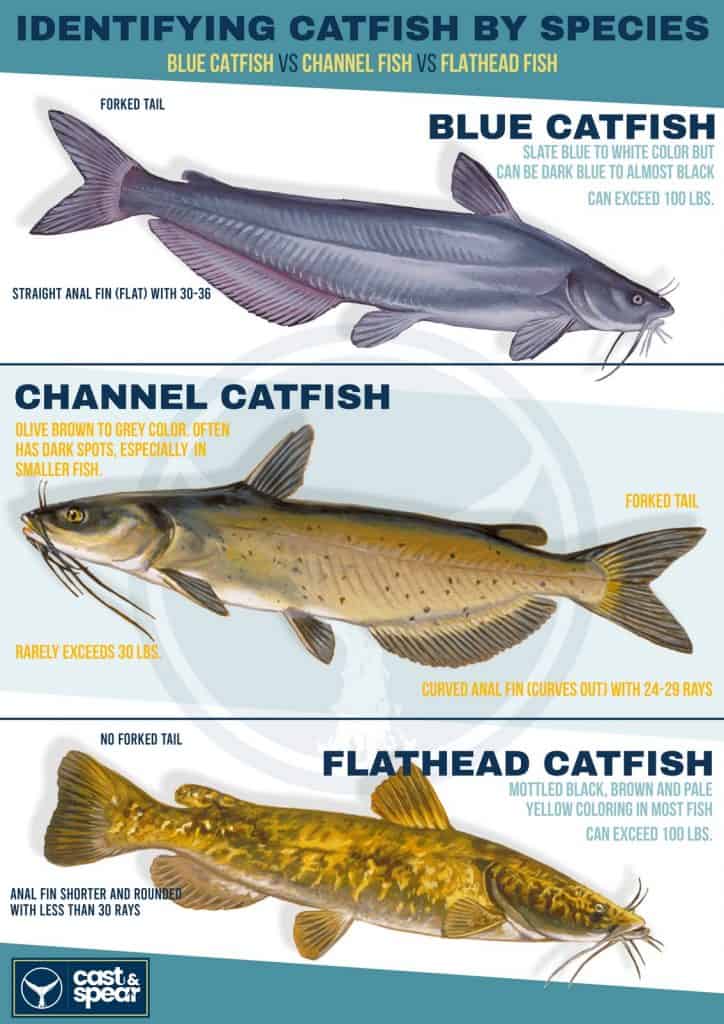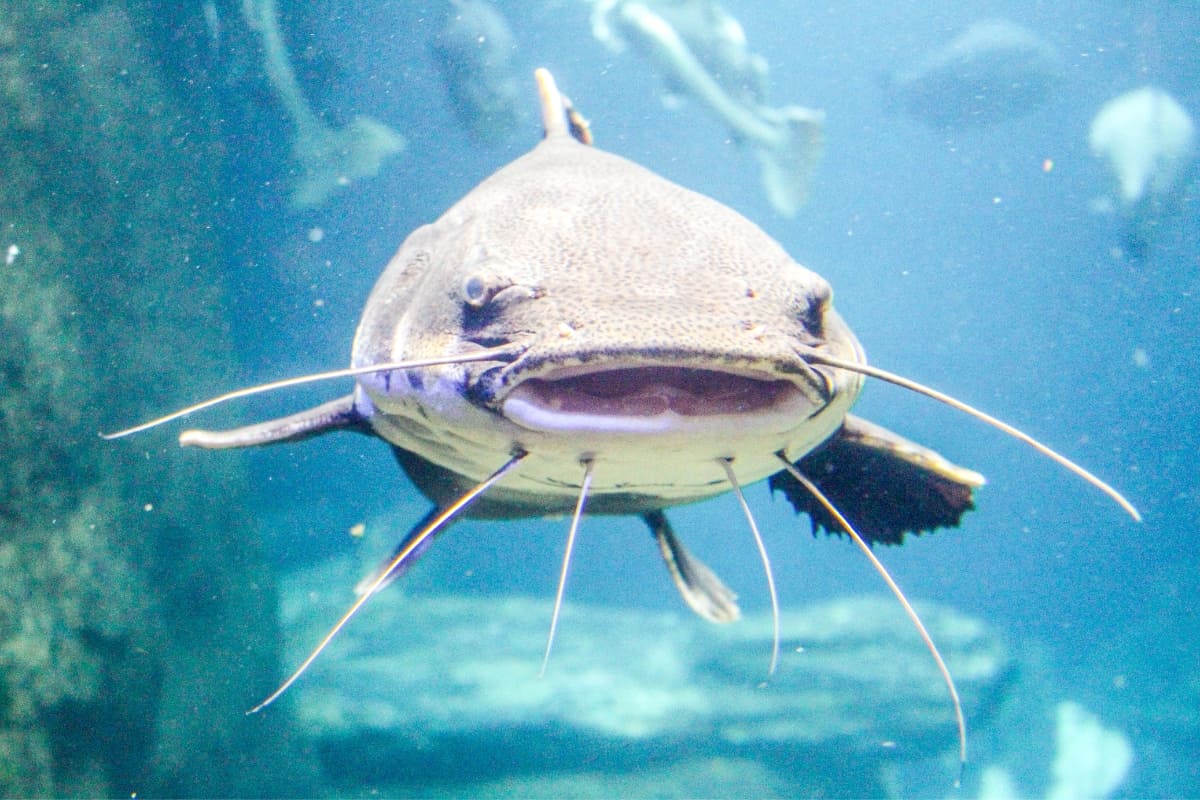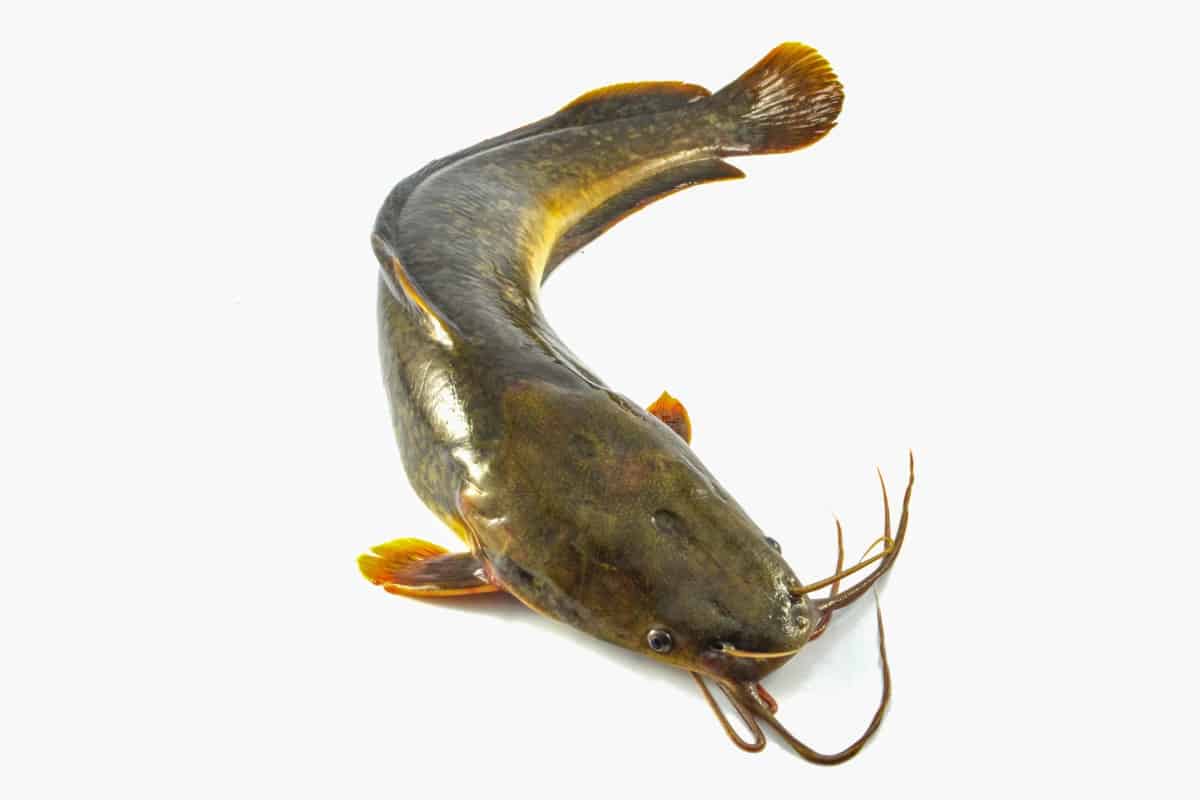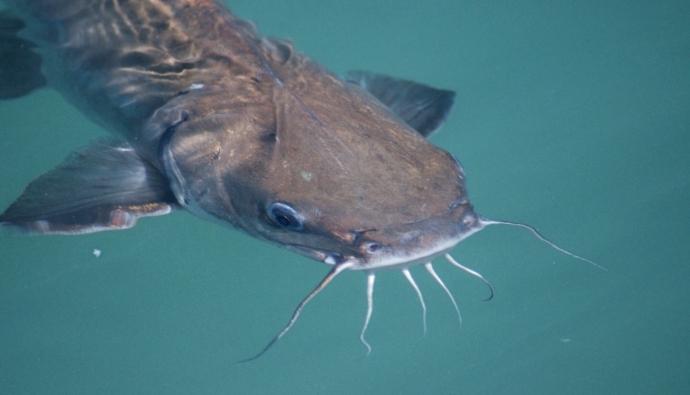Catfish are one of the most popular fish groups caught for food by anglers around the world.
Within this group, two of the most sought-after species are the blue catfish and channel catfish. Belonging to the same group, blue and channel catfish share a number of similarities, which makes it hard for anglers to tell them apart.
In this article, we will discuss a comparison of blue catfish vs channel catfish in order to help you identify them.
What are the Different Types of Catfish?
Before moving to the comparison of blue catfish vs channel catfish, we need to highlight the different types of catfish. This will help you to understand the characteristics of catfish.
A catfish is a group of ray-finned fish that have whiskers around their mouth. These whiskers are referred to as barbels and give them a cat-like outlook, hence their name.
Catfish are known to be bottom feeders that have smooth skin and no scales. In place of scales, they have sharp spines on different parts of their bodies, including their sides, backs, and fins.
There are around 3000 different species of catfish all over the world, with about 30 species living in the United States of America alone. As a matter of fact, one in every twenty vertebrates is a catfish.
Catfish can be found in every continent of the world, from the Americas to Asia and Africa, except Antarctica. Some of the common catfish species are cory catfish, white catfish, bullhead catfish, glass catfish, pictus catfish, upside-down catfish, bumblebee catfish, wels catfish, etc.
For the purpose of our article, we will discuss the top three species of catfish, which are flathead catfish, blue catfish, and channel catfish.

These three species are the top choices of the average angler, and they can be commonly found in lakes, rivers, and reservoirs around.
Blue catfish are also known as high-fin blue or hump-back blue, having a forked tail. Channel catfish have a deeply forked tail similar to blue catfish, while flathead catfish have a straight tail. Flathead catfish are also known as yellow cat or shovelhead cat.
Channel catfish have a curved anal fin, while flathead catfish have a rounded anal fin, and blue catfish have a straight anal fin. These catfish species can also be differentiated using their colors.
While flathead catfish come in brown and pale yellow as well as mottled black, channel catfish usually have an olive brown to grey coloring with dark spots.
Blue catfish, on the other hand, range from slate blue to dark blue and white and could be almost black in some cases.
Blue Catfish vs Channel Catfish

Now that we have touched on the different types of catfish, we can proceed to a full comparison of blue catfish vs. channel catfish.
These two types of catfish belong to the same family and genus but are different species. They are both part of the Ictaluridae family and Ictalurus genus.
Blue catfish are from the Ictalurus furcatus species, while channel catfish are from the Ictalurus punctatus species.
Channel catfish are commonly called channel cats, while blue catfish are called hump-back blue. Below is a comparison of their features and characteristics.
Size & Weight
The main difference between blue catfish and channel catfish lies in their size and weight. This is because blue catfish are significantly bigger than channel catfish.
Blue catfish, on average, weigh between 40 to 150 pounds, with their overall length between 30 to 60 inches. Channel catfish, on the other hand, weigh between 15 to 40 pounds, with a length that lies between 12 to 24 inches.
The biggest blue catfish ever caught weighed 143 pounds. Blue catfish are fished for their size and strength. They are known to be good fighters that give anglers a fierce battle whenever they are baited.
Appearance
The appearance is a reliable means of telling a blue catfish and channel catfish apart, particularly when the difference in size is unclear.
The main features to look out for in both catfish species are their color and anal fins. Both species have smooth skin with no scales, as they belong to the catfish family. They also both have one dorsal fin, each with a forked tail fin.
Blue catfish have a straight anal fin that is flat, while channel catfish have an anal fin that curves out.
The number of rays in the anal fins of both catfish species differs. Blue catfish typically have between 30 to 35 rays in their straight anal fins, while channel catfish have between 24 to 29 rays in their curved anal fins.
As their name suggests, blue catfish have a blue color. The coloring of their skin ranges from slate blue to dark blue, with a white underbelly.
Blue catfish do not have dark spots on their body. Channel catfish have a skin color that ranges from olive brown to grey. Their underbelly usually has a white or silvery color. Young channel catfish have dark spots on their skin, which erases as they become adults.
During the spawning period, the body of male channel catfish takes a blueish color. In such a case, it is best to check their anal fins in order to avoid confusion.
Habitat
Channel catfish are commonly found in ponds, lakes, reservoirs, and rivers in areas like Northern Mexico, and Lower Canada, as well as the Eastern and Northern United States.
Blue catfish are commonly found in lakes, ponds, and rivers, as well as brackish water inlets in the South and the Southeastern United States. You can find them in areas like the Rio Grande River basins, Missouri, and Mississippi, as well as Belize, Mexico, and Guatemala.
Blue catfish enjoy inhabiting large rivers and fast-moving streams, while channel catfish prefer waterways with low or moderate currents. Channel catfish and blue catfish can both be found in the same waters in South Carolina.
Lifespan
Blue catfish usually have a longer lifespan than channel catfish.
One interesting fact about catfish is that they grow throughout their lifespan. Therefore, the older the catfish, the larger it is. A wild blue catfish has an average lifespan of 20 to 30 years, while a wild channel catfish has an average lifespan of 10 to 15 years.
Blue catfish reach 24 inches in length before they become sexually mature. Channel catfish become sexually mature when they are about twelve inches in length between the ages of three and six years.
Behavior
Channel catfish and blue catfish are both opportunistic predators, as they consume a varied diet. Both fish species feed on invertebrates and fish.
Young blue catfish feed on aquatic insects, as well as small fish like mussels and crayfish. Blue catfish bite artificial catfish bait but are best fished with freshly dead and live bait. They can be baited in shallow water or deep water, depending on the season.
Blue catfish and channel catfish spawn around the same period, which is in late spring and early summer, with water temperatures around 75 degrees.
When spawning, male channel catfish find nest sites located in dark, secluded areas such as undercut banks, trees, and logs. Once the eggs are laid, the male fish stand guard, protecting the nest.
What is the main difference between channel catfish and blue catfish?
The main difference between channel catfish and blue catfish is their color and anal fins. While blue catfish have a slate blue color and a straight anal fin, channel catfish are olive-brown with a curved anal fin.
Which type of catfish tastes best?
Both catfish species have a similar taste, which is mild to medium. The taste largely depends on where the catfish are caught. A farm-raised catfish is mild, while a wild catfish is muddier.
Conclusion
Channel catfish and blue catfish are great choices of fish to catch and eat. With their differences highlighted above, telling both species apart will be easy and straightforward.
Look out for the colors and anal fins when trying to identify your catch. Most importantly, make sure to employ safe fishing practices at all times.


 Facebook
Facebook YouTube
YouTube









